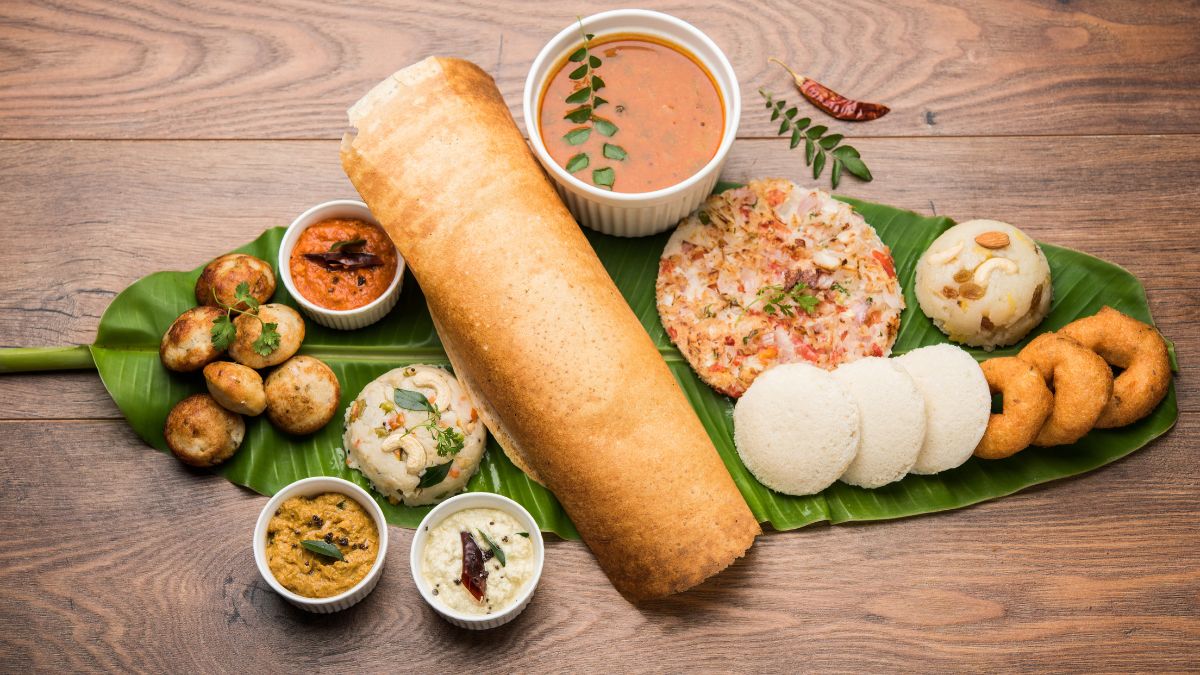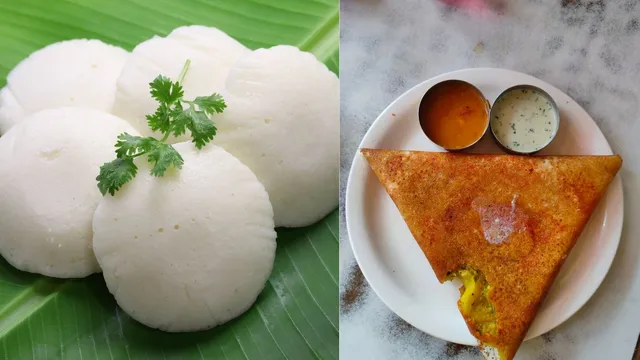- By Bornika Das
- Thu, 02 Oct 2025 05:29 PM (IST)
- Source:JND
Idli vs Dosa For Weight Loss: Two South Indian breakfast staples that rule the table are idli and dosa. They are both popular for their distinctive taste and health benefits. Idlis are soft, fluffy and almost cloud-like in their simplicity. On the other hand, dosa are thin, golden crepe-like and taste delicious when paired with sambhar or coconut chutney. However, when it comes to weight loss, people are often confused about whether to consume idli or dosa for breakfast. It becomes less about the taste and more about the health. Idlis are steamed and have low calories, while dosa keeps the stomach full for longer and is versatile. If you’re confused about which would be the best option for weight loss, let us help you break down idlis and dosa.
Idli vs Dosa: Cooking Key Differences
Both for idli and dosa, rice and urad dal are soaked, ground and fermented overnight. The fermentation process boosts gut-friendly bacteria, breaks down carbs and helps your body absorb nutrients better.
ALSO READ: Idli vs Chapati: Which Is The Healthier Tiffin Option For School Lunch?
While idli is steamed in moulds with no oil, dosa is spread thin on a griddle and cooked with oil or ghee. The same batter can be used to achieve two different outcomes, that is idlis and dosas.
Idli vs Dosa: Which Is Better For Weight Loss?
Calories
Idli: A plain idli (35-50 g) has about 39-50 calories. Because it is steamed, it remains low in fat and retains nutrients without added oil.
Dosa: A plain dosa (80-100 g) carries around 100-120 calories. The difference comes from the oil or ghee used while cooking, which soaks into the thin batter.
Note: Steaming idlis are light and nutrient-rich. Those who are on calorie-restricted diets can opt for idlis.
Satiety
Idli: They are gentle on the stomach but may make you feel hungry within a couple of hours unless paired with sambhar, which adds lentil protein and fibre.
Dosa: They are crisp, larger in size and are fulfilling. You can customise by adding paneer, sprouts or vegetables and it slowly releases energy to keep you full for hours.
Note: You can upgrade dosa with moong dal batter and paneer filling, making it high in protein and ideal for weight management.

Idli Or Dosa For Weight Loss (Image Credits: Canva)
Digestibility And Gut Health
Idli: Fermented and steamed, idlis are one of the easiest foods to digest. They are suitable for children, the elderly and even those recovering from illness.
Dosa: Fermentation supports gut health even in the case of dosa. But the oil used in cooking makes the dosa heavier compared to the idli.
Note: The fermentation in idli batter improves gut bacteria and enhances nutrient absorption. It is a nutritious option for all age groups."
Glycaemic Index
Idli: It has a lower to medium glycaemic index range, which means it raises blood sugar more gradually.
Dosa: Typically higher GI, especially if made mostly with rice and cooked in generous oil.
Note: People are tweaking the batter to make it diabetes-friendly. They can use brown rice, oats or millets to reduce the glycaemic load.
Protein
Idli: It is not a significant protein source. However, pairing it with sambhar helps, as the lentils add both protein and fibre.
Dosa: More adaptable to protein upgrades. Replace part of the rice with moong dal or ragi and add fillings like tofu, paneer or sprouts. This transforms dosa into a balanced, protein-rich meal.
Note: Often, proteins are missing in traditional Indian breakfasts. Dosa fillings are an excellent way to correct that without changing the dish.
ALSO READ: Dosa vs Uttapam: What’s The Key Difference Between These South Indian Dishes?
Versatility
Idli: Known mostly in its classic form, but there are variations like rava idli, masala idli or podi-coated mini idlis.
Dosa: From paper dosa to set dosa, ragi dosa to quinoa dosa, there are endless options for the crepe as well as the stuffing, adapting as per diets and flavour preferences.
Thus, idlis are an ideal South Indian breakfast option for weight loss owing to their low calorie content, digestibility and diabetic-friendliness. Dosa, on the other hand, is fulfilling, versatile and rich in protein, owing to the fermentation process.

